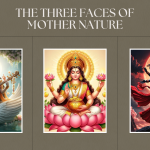Energy and Medicine
Qi gong is a form of physical exercise that combines physical movement, breathing, and meditation. The origins of this practice are dated to be over 5000 years old, as part of the practice of Traditional Chinese Medicine (TCM).1
The words qi gong literally mean breath or energy exercise. However, the definitions and applications of this practice reach far beyond this simple translation. Central to the practice of qi gong is the principle of qi. The Chinese character for qi means air. Air is the most perceivable aspect of qi due to its dynamic, mobile nature. Breathing associated with qi gong serve as a bridge to realizing deeper functions of qi gong.
Principles of Chinese medicine describe qi as bioenergy in the body that takes the form of xue – blood, jing – essence of the body, shen – mind or spirit, and ye – the body fluids. TCM theory states that good health exists when the body physiology is balanced and harmonized; and its qi or bioenergy is flowing freely through the internal qi pathways or acupuncture meridian system.1 This theory has proven successful in treating wide variety of illnesses for several thousand years. Qi gong as a healing system has been tested, applied, and refined through many millennia of practice.
Meditation is another essential aspect of qi gong that helps to develop the powers of the mind. This helps for concentrating, regulating, and directing flow of bio-energy or qi. Mind is the main organ that controls output and input for the individual. Information from all sensory organs (eyes, ears, nose, etc.) and stimulation to all organs of action (hands, feet, sexual organs, and internal organs) go through the mind. This inter-connectedness of the body and mind makes the mind readily useful for concentrating, regulating, and directing qi flow throughout.
In the Medical Qi Gong Manual, Dr. Guan-Cheng Sun states “once the energy is activated it must be coordinated with the activities of the mind, so that mind and body can benefit from synchronization and mutual influence.” This “mutual influence” is the system of checks and balances that harmonizes the physiology and maintains vital homeostasis.
Mindful awareness of the body can provide an acute observation of the physical, mental, and emotional reactions to our environment. Which, in turn, gives important insight about our own nature. Therefore, mindfulness practice can be applied toward gaining deeper awareness of the relationship between mental/emotional activity and the functions of the body.
Over the course of history, qi gong has earned the name Dao Yin which means “guiding and directing Qi flow” by means of specific movements and breathing. Dao Yin illustrations dating back to 200 BC depict a variety of exercises that synchronize breath with specific movement. This relationship between breath and practice of qi gong is described in the sixth century B.C. text called the Jade Pendant Inscription on Xing Qi.
Translation by Simon Wang MD, PhD and Julius L. Liu MD reads as follows:
“In breathing and moving Qi, one holds the breath and it is deeply stored. If it is stored, it expands. When it expands, it descends. When it descends it becomes stable. When it becomes stable it will solidify. When converted to solidity, it will begin to sprout. After it has sprouted it will grow. When it grows, it will retreat. When it retreats, it will reach the heaven. Heavenly Qi functions from above and earthly Qi functions from below. Conformity to this leads to life, while adverseness to this leads to death”
This passage describes the way of conscious integration of the individual qi system with the Universal Qi through the practice of qi gong. Sincere practice leads to natural evolution of the individual’s energy system into a more refined state of qi activity guided by the natural laws. Our body and energy become strengthened and resilient to emotional disharmony and disease. This refined state of qi activity raises one’s consciousness from mundane and limited state of awareness to a state of expansive, global awareness. Such evolution requires assimilation of natural laws into one’s beliefs and activities – as stated above – “Conformity to this leads to life, while adverseness leads to death.”
Reference:
Guan Cheng-Sun and Jill Gonet. Qi Gong: Internal Activition, Yi Ren Medical Qigong Manual Vol. 1. Copyright, 2010 by Guan-Cheng Sun and Jill Gonet.



